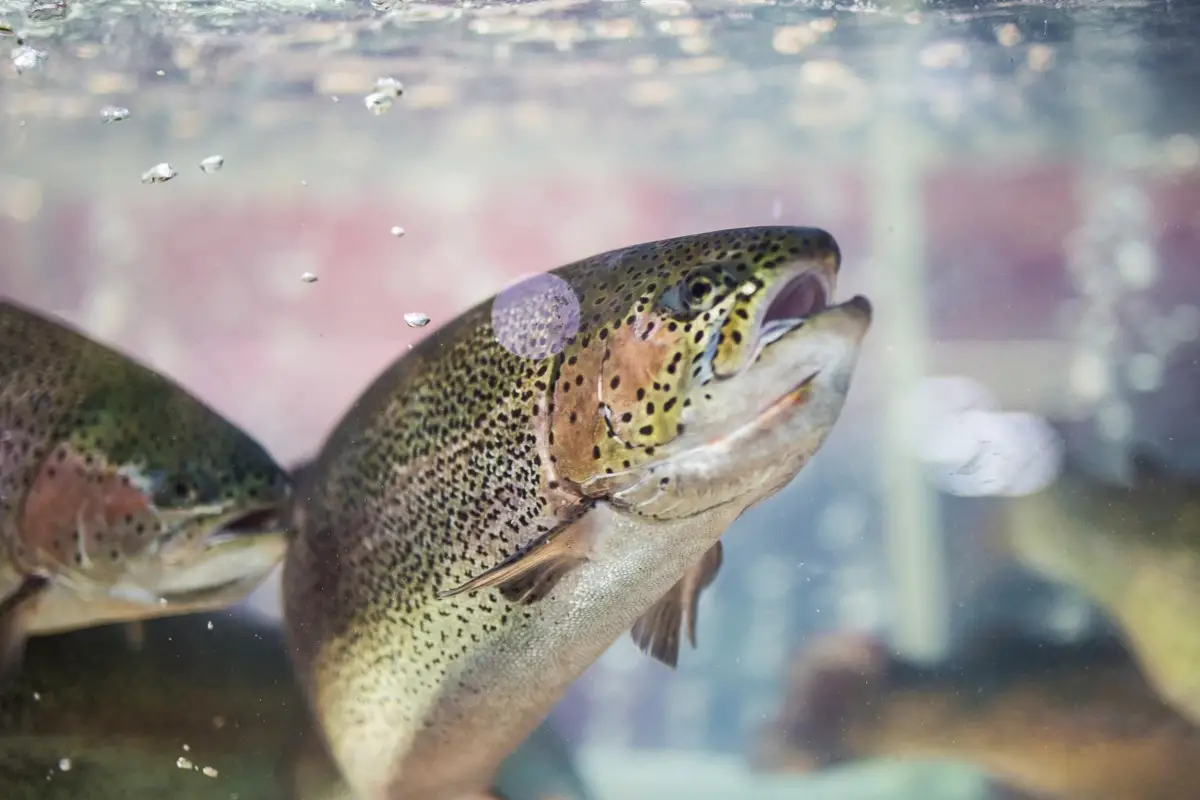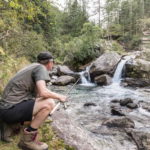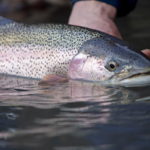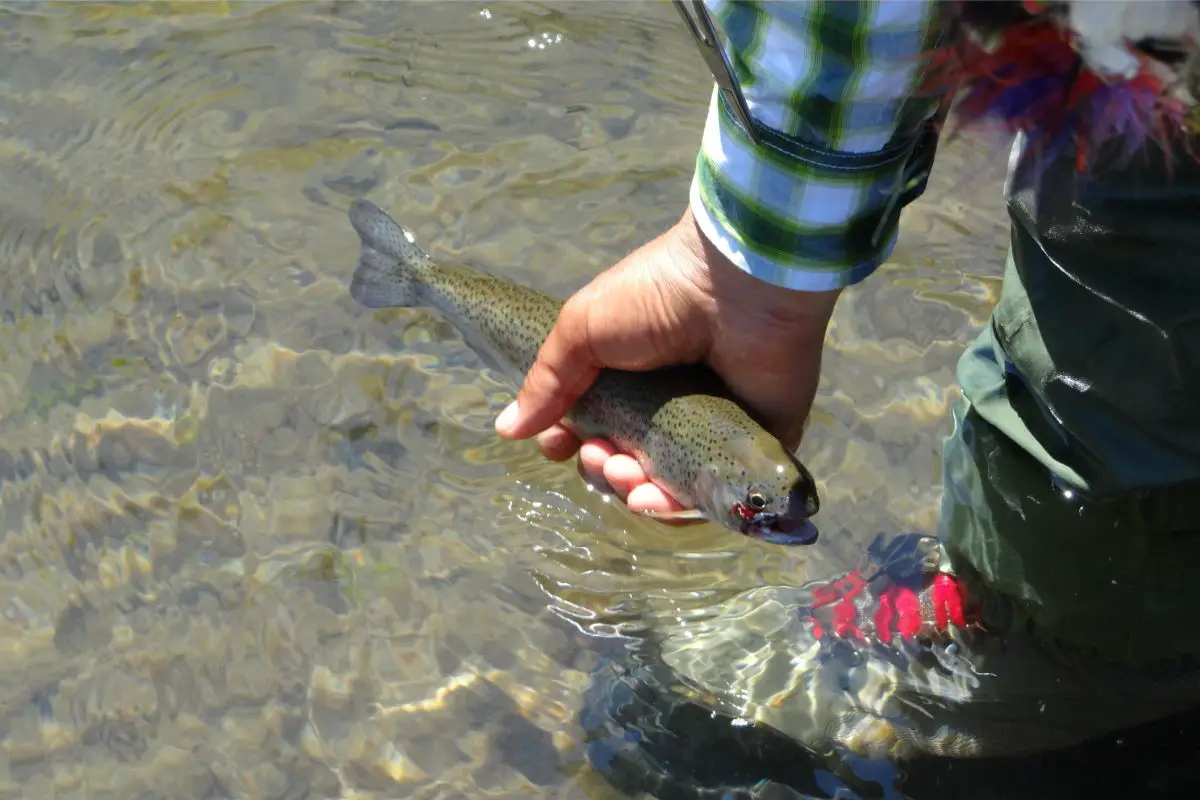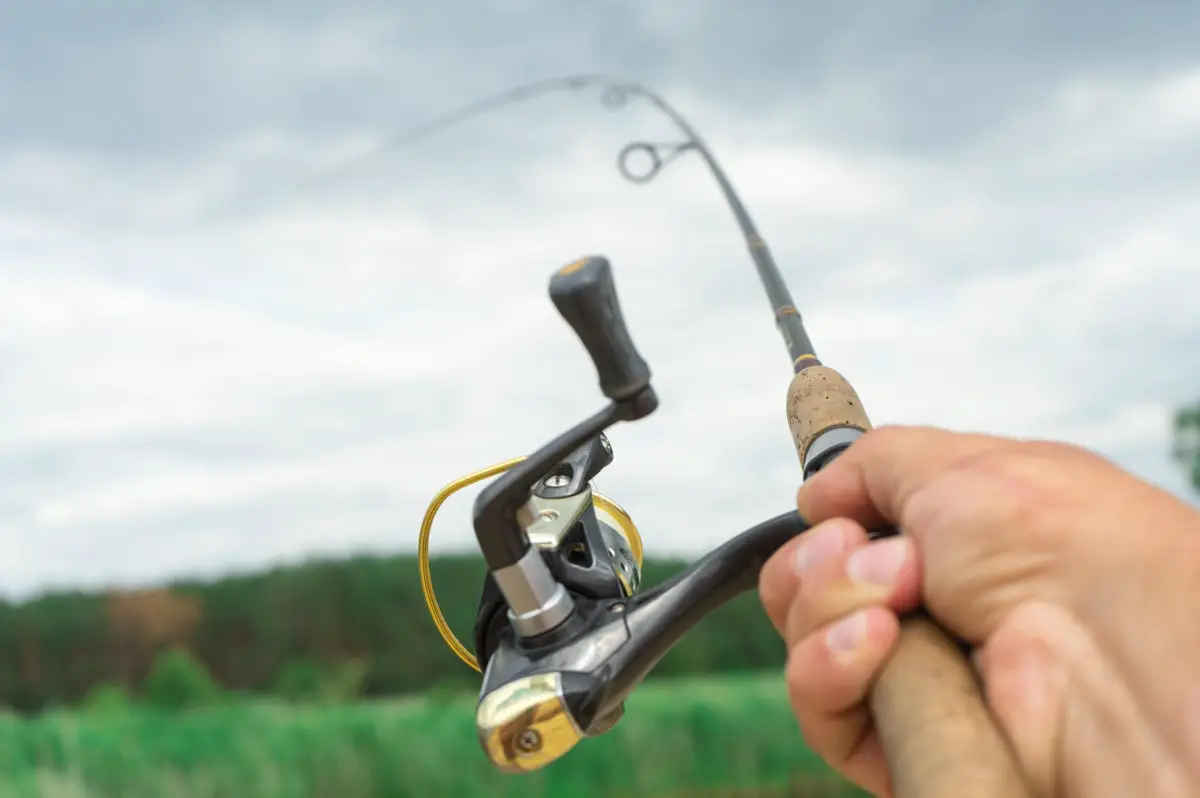A rainbow trout is a species of salmonid found in cold-water tributaries, such as the pacific ocean. The scientific name of a Rainbow Trout is Oncorhynchus (genus) mykiss (species). A group of rainbow trout is known as a hover.
Rainbow trout spawning is when the female trout (a hen) releases eggs in the water, while the male simultaneously releases the sperm over the eggs. This act, also known as broadcasting, fertilizes the eggs and starts the life cycle of a rainbow trout.
Now let’s look a bit more closely at the process.
What Is Rainbow Trout Spawning?
Spawning occurs when both sexes in underwater kingdoms release sperm and eggs. For rainbow trout, the female sends her eggs out into the water for the male to fertilize. The male rainbow trout will not fully fertilize all the eggs; this will also depend on the position of the redd(nest) and the predators.
The redd might be positioned in an area where the conditions are not favorable for the eggs.
There are also predators; some fish also feed on these eggs, which is their food source. For incubators, the success rate of spawning is high since the predator variable has been eliminated.
Where Do Rainbow Trout Spawn?
Humans try to prepare themselves and their surroundings for their newborn babies, so does the female rainbow trout. When a female rainbow trout is ready to spawn, she prepares an area for the procedure.
Rainbow trout usually spawn in small creeks, backwaters, or shallow areas of lakes with clear water and a gravel bottom. Their preparation includes creating a spawning area known as a redd.
The larger area where fish might spawn is called a spawning bed and may contain several redds where fish spawn.
What is a Redd for Rainbow Trout?
A Redd is a pocket in a gravel bed of a stream that Rainbow Trout use as a nest to lay the eggs. Other species also use redds to lay their eggs.
It is easy to spot a redd by quickly spotting the fish or a section of cleaned gravel. A good redd has the following characteristics,
- Clear waters
- Well oxygenated waters
- Loose gravel free from silt
- Coldwater
Female rainbow trout select a spot for their eggs then use their body to dig a hole with a sweeping motion. The pair spawn directly above the nest area, allowing the fertilized eggs to drop into the pocket.
It may take up to a week for the female rainbow trout to create a redd. The above factors affect hatching success. The spawning area width is between 5-40 mm (0.19-1.57 inches).
After spawning is complete, many fish species brush gravel over their eggs to protect them from predators.
How Do Rainbow Trout Spawn?
The female rainbow trout will hove just upriver from the redd she created. Then a male will swim alongside her and shake to signal the start of the spawning process. The female will release her eggs and the male will release sperm at the same time. The sperm discharge is white. It is not unusual for another male to try to join the spawning.
During spawning, there are four distinguishable processes,
- Male nuzzling over the female faces.
- Male pursuing a swimming female.
- Pair or trio trembling while swimming.
- Spawning near the water surface.
Like in the animal kingdom, aggressive and larger males are successful spawners. This process above is non-existent in an incubator. People who practice fish farming do the spawning process themselves. You can find the procedure on Youtube via the New Jersey Department of Environmental Protection’s page.
Here is an excellent video of trout spawning in the wild from an independent youtube producer.
When Does Rainbow Trout Spawning Occur?
Springtime is the favorite spawning time, but this can also depend on the geographical location. In low elevation areas, rainbow trout spawn around February and March. Ocean-going rainbow trout(Steelhead) tend to spawn in late winter.
Spawning can occur between March and April in higher elevation areas where the water temperature is still cold.
This period brings rainbow trout to shallow gravel areas. The spaces within the gravel as such that the eggs can receive enough oxygen. After fertilization, the female fans the tail around the gravel to cover the eggs to protect them from predators.
How Old Are Rainbow Trout When They Start Spawning?
Rainbow Trout spawn early in their years compared to other trout species.
These trout begin breeding at two to three years of maturity. The female trout is mature when the eggs are ripe and ready to be released. Most of the ovaries cover a large percentage of the trout’s body. A 500 g (17.63 oz) female rainbow trout releases approximately 800 eggs.
Therefore the amount of eggs depends on the size of the fish.
Their weight varies, depending on their size. Most female trout are significantly larger than the male. To differentiate the male from female trout, one can examine the mouth. The female trout has a rounded nose while the male has an elongated snout.
Can Rainbow Trout Be Raised in a Hatchery?
Rainbow trout can be raised in a hatchery if grown under the right conditions and met with local regulations. By understanding the spawning process, it is easy to rear rainbow trout in a hatchery.
Rainbow trout reared in an incubator are fed fish-meal pellets; therefore, they do not know how to hunt for their food.
Rainbow trout has become a favorite reared fish because they are highly adaptable and grow very fast. The success rate of farming them is also so high, making their market dependable. One can get the rainbow trout all year round at a stable price. They are also a healthy meal to consume since they passed the Food and Drug Administration (FDA) test.
Can We Create Spawning Areas for Rainbow Trout?
Most people who understand fish farming can create spawning areas for rainbow trout. Understanding the fertilization process is crucial for one to create a spawning area.
Below is a short overview of the process:
- Egg: Trout eggs have black eyes. Successful hatchings and development depend on the redd.
- Alevin: At this stage, the egg hatches and retains the egg’s soft shell, the yolk, as a source of nutrients. At this stage, they are one-inch (2.54-cm) in length.
- Fry: This stage occurs when the Alevin absorbs the egg yolk for nutrients and feeds on zooplankton. At this stage, they float closer to the surface.
- Fingerling and parr: The fry becomes a fingerling when it attains a length of two to five inches (5.08 to 12.7 cm) long. When it develops the black markings, it becomes a parr. Most of the incubators in school release the parrs into their natural habitat at this stage.
- Juvenile: This stage is where the trout resembles a grown rainbow but is small in size. Most of the trout at the juvenile stage stay away by hiding underneath roots in water. At this stage, they are still susceptible to predators. At the hatcheries, rainbow trout do not need to worry about predators.
- Adult: This is the final stage of development. Most trout have a lifespan of approximately six to seven years. On the lifecycle, the cycle goes back to the egg stage again for a new life to be produced.
Rainbow trout are primarily found in clean and well-oxygenated water. One has to consider this for a successful rainbow trout venture.
Where Can You See Rainbow Trout Spawn?
Although we have rainbow trout in lakes, rivers, and streams, most people have begun keeping them in incubators and doing the spawning process themselves.
We can find rainbow trout spawning in streams west of the Cascade mountains in the U.S also on the rivers and lakes draining into the pacific on the west coast of North America.
Rainbow trout that are not found on the historical range are planted, resulting in non-native trout. Hatcheries have made it possible for people in different areas to access the rainbow trout.
The primary producing areas are located in:
- Europe
- North America
- Chile
- Japan
- Australia
Conclusion
Fish farming has certainly increased in popularity over the last few decades. If you’re interested in rainbow trout farming, hopefully, this guide has helped you and made it easier for you to understand rainbow trout spawning.
Knowing as much as you can about the spawning process, the life cycle of rainbow trout, and how to simulate their natural spawning environment should be very beneficial to anyone hoping to pursue this venture.
